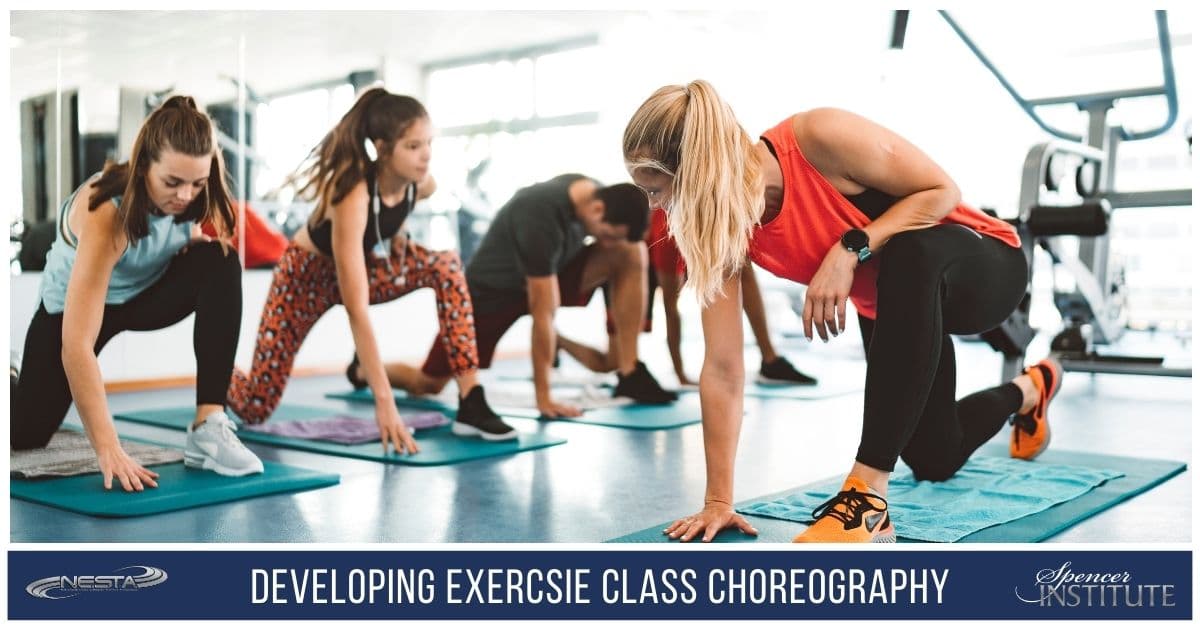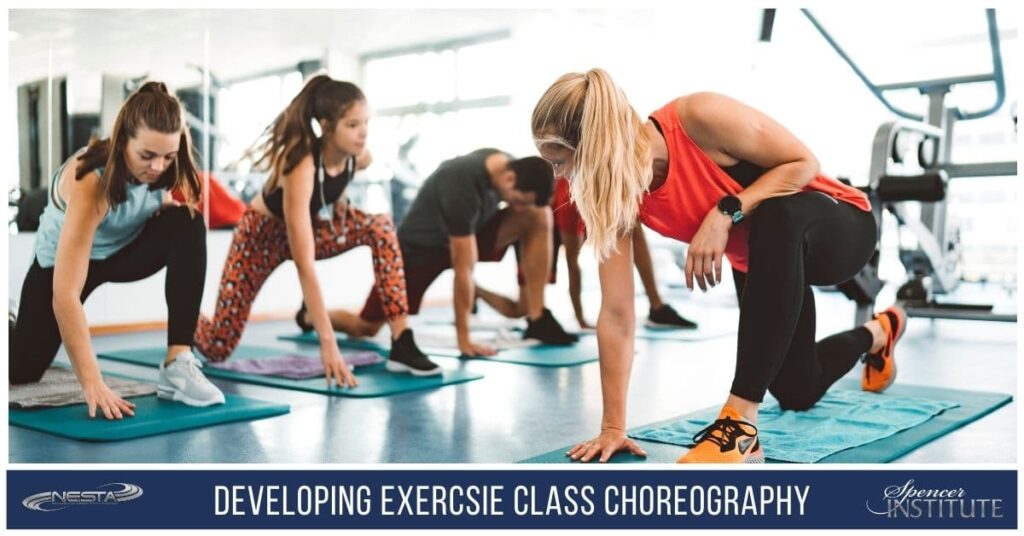How Do you Develop Group Fitness Choreography?

Delivering the result in an organized method is essential. You need to have a plan and a way to get there.
There are a few different ways to arrive at your result. Start with the easiest way for yourself. After gaining experience in the field, you’ll find different ways to deliver the same material.
Two methods, established by Dr. Lorna Francis, that are very standard are the Structured Method and the Freestyle Method.
Structured Method
Dr. Lorna Francis defines the Structured Method as “movements that are formally arranged and repeated in a predetermined order and usually performed to the same piece of music each time the routine is used.” From Judi Sheppard Missett from Jazzercise to Les Mills, this style is predetermined and memorized by the instructor.
Some instructors feel more comfortable with this method because they can trust a team of professionals to find good music and apply safe and effective moves to the music. Instructors know which moves are performed on which phrases of the music, provided they’re good at memorization. This style is less favorable among creative types who enjoy new choreography frequently.
Freestyle Method
The Freestyle Method gives an instructor more freedom to create and play with new moves. Freestyling involves movements that are built and sequenced by the instructor during the class, layering as they go. These movements can be sequenced either by using linear progressions or by placing movements into patterns or combinations. Linear movements are easier for instructors to use in the beginning because the movement develops from the prior movement.
A great drill for this is the “Follow Me Method” and “Only change one thing at a time.” Candice Copeland Brooks would use these types of drills to teach instructors. One instructor to be would start at the front of the room and start with a march. The instructor would add arms, and then change the arms gradually. Changes need to be progressive and not abrupt so a front raise might turn into bicep curls. The only two rules of these drills would be:
- Only change one thing at a time.
- Gradually change the movement.
Being a great leader is very important. Your students will feel so much more successful if they can follow along with you. Also, avoid TMI (Too Much Information). Keep your cueing short and sweet. Only cue when a change is coming up or to give some encouragement or motivation.
Teaching Choreography
There are quite a few ways to teach choreography. One way is to teach a movement, for example, step heel in front and repeat. Then add step toe back and repeat. With no arms added yet, put these two movements together.
After the students get the leg movement, add in the arms. Part A would be the “step heel in front” and Part B would be the “step toe back”.
This is a very basic combination. You could add to the combination by adding Part C and D. If you taught a grapevine for Part C and step touch for Part D and put those two movements together for another small combination. Then, you can place A and B with C and D.
Elements of Variation
Elements of Variation was a term coined by Candice Copeland Brooks in 1987. To change the look and feel of a movement, Candice described five elements of variation (lever, planar, directional, rhythmic, and intensity). Starting with a base movement we can vary that movement in a few different ways.
For example, if you started with both arms moving straight forward you could change the straight arms into bicep curls, or change the arms to the side with bent elbows and then straight arms. You could also speed up the arm movement or slow it down. You could change both arms at the same time to one arm at a time.
Using this idea, there is a drill to do which I call, “One thing at a time”. Stand in front of the mirror and start with a march. Then add arms and continue to change just “One thing at a time”. This is a great drill for those who are just starting to teach. It also gives instructors a way to think about progressions in a logical method.
Try it with yourself and then with a buddy. Use all the elements of variation. This is a great way to keep transitions smooth and to have your students follow along.
Getting Started
Learn how to teach an effective warm-up, cardiorespiratory segment (low-high), sculpting, bodyweight exercises, dynamic flexibility, metabolic HIIT bursts, cool-down and stretch with our Group Exercise Instructor.
Check out what it takes to start a career in personal fitness training. This is your most affordable and fastest way to become a highly qualified personal trainer.
Is your recertification coming up? Learn more about earning your CEU credits. You can find the full list of CEU courses here.
If you are ready to start your online personal training or coaching business, don’t forget to learn more about our online coaching course. You will also really enjoy this very comprehensive training course called Online Expert Empire.
There is always something exciting about earning a new training or coaching certification and applying that new knowledge of how you train your clients. This also helps you hit the reset button.
NESTA and Spencer Institute coaching programs are open to anyone with a desire to learn and help others. There are no prerequisites.
That’s it for now.
Take action!
PS: Click here to see many helpful business/career resources






